Tools and incentives can spur cost-conscious decisions
BY Stephen Miller, CEBS, HR Today
Millennial employees, especially, are “shopping” for nonemergency health care providers, although hurdles continue to impede cost-savvy choices for tests and procedures.
Millennial employees—who now outnumber Baby Boomers—are more comfortable with nontraditional ways of engaging with their health care providers and are more likely to apply shopping habits associated with online retail to their health care decision-making, whether in a traditional or a high-deductible health plan, a survey by the nonprofit Employee Benefit Research Institute (EBRI) found.
According to results from the survey published in EBRI’s March Issue Brief, Millennials were more likely than other generations to:
- Check the quality or rating of a doctor or hospital—51 percent Millennial compared to 34 percent Generation X and 31 percent Baby Boomers.
- Use an online health care cost-tracking tool—28 percent Millennial compared to 17 percent Generation X and 10 percent Baby Boomers.
Millennials were also more than twice as likely as Baby Boomers to use a walk-in clinic and more than twice as likely to consider using telemedicine.
“These findings perhaps reflect [Millennials] comfort in researching consumer decisions online, and applying the same consumer habits they use on Amazon or other retail online sites to the health care arena,” said Paul Fronstin, EBRI’s director of health research and education.
Transparency Challenges
While online tools and smartphone apps are increasing available to show price and quality ratings for health care providers, progress toward health care consumerism has been slowed by “lack of proper employee financial incentives and health insurance plans that create disincentives for people to care what the actual cost of a test or procedure is,” said Mark Galvin, CEO of MyMedicalShopper in Portsmouth, N.H., which provides data and tools for health care consumers.
He noted that transparency tools may “lack critical features that make them generally usable by Millennials and others,” such as by:
- Not being “built first for mobile.” The moment your doctor tells you that she is sending you for a test or procedure “is not the time to pull out your laptop and navigate five levels deep into a website to try to search price and quality,” Galvin said. A better solution is to have a user-friendly app already installed on your handy smartphone, making price comparisons “as simple as searching on Google for anything else.”
- Not providing precise insurance-negotiated rates. Some tools display “fair prices” as a benchmark to use when contacting health care providers, or a “green, yellow, red” indication of where in the market-price spectrum a particular provider or facility might be. “These are unfamiliar shopping concepts to people who have grown up with Pinterest, eBay, Amazon, Google and Yahoo,” Galvin noted.
It “would be a big step toward fixing this broken market,” he added, if plan sponsors made sure brokers are not paid based on a percentage of premiums, and if they eliminated structures like co-pays “that create scenarios where the patient pays the same out-of-pocket regardless of the wild price variations within a short travel distance.”
Hospitals and doctors also have been criticized for not making the prices on their services more readily available. While progress toward greater price transparency “at the macro level has stalled—in the sense that the industry hasn’t seemed to make much progress in the availability of transparency data—it hasn’t stalled at the employer/patient level,” said Kim Buckey, vice president of client services at Birmingham, Ala.-based DirectPath, a provider of personalized benefits education, enrollment and health care transparency services. “We’re seeing increasing interest from employers in transparency services and increased use by participants where employers offer these plans.”
As EBRI noted, Millennials are “more comfortable with consumerism—this is the generation that grew up being able to customize just about everything, from how their phones and laptops are configured to how their coffee is made,” Buckey said. Still, “the barrier for them—as for all users of health care—is lack of knowledge of price differences and that they can, indeed, shop for these services just as they shop for those laptops and lattes.”
[SHRM members-only toolkit: Managing Health Care Costs]
HSAs and Consumerism
“Consumers are empowered now to make their own decisions, but they’re horribly unprepared to make really smart decisions,” said Anna Phalen, vice president of customer insights and account management at Jellyvision, an employee communication software firm based in Chicago. “Employees are looking to employers for more options supported by tools to help them make the best choice. It’s become an expectation, like any other benefit.”
‘Consumers are … horribly unprepared to make really smart decisions.’
When communicating with employees about consumer-driven health care plans—such as high-deductible health plans coupled with a health savings account (HSA)—Phalen advised, “Remind employees how their HSA contributions will help cover costs for prescription drugs, then point them to price comparison sites like GoodRX.com to show them what they can expect to pay out-of-pocket for their medication—and where to find the best deals.”
“Enrollment levels in HSA plans are related to how employers view the plan,” said Beth Umland, director of research for consultancy Mercer’s health and business practice. “Investing in communications can make [a big difference] in driving enrollment to an HSA plan.”
“It seems that the longer a participant has had an HSA, the more we see signs of engagement, like contributing $2,000 or more annually to the account,” EBRI’s Fronstin said. “It takes participants some time to figure out how plans work.”
He noted that, “once the plan design is better understood, participants are more likely to take advantage” of an HSA’s many benefits. These include being able to contribute pretax dollars to the account and to build up or invest unspent funds to pay for future out-of-pocket health care expenses, creating an incentive to spend prudently today so that funds are still available down the road.
